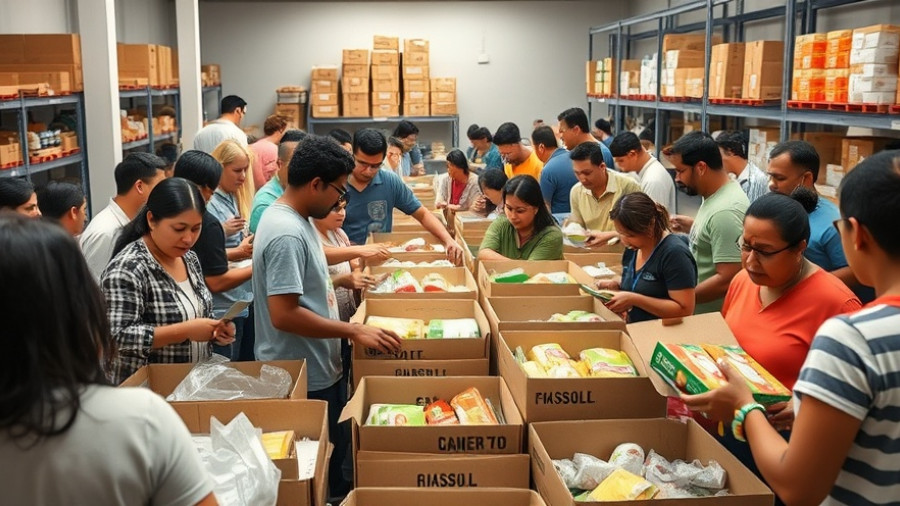
A Crisis in Food Security: Understanding the SNAP Shutdown
The looming suspension of federal food assistance benefits, specifically the Supplemental Nutrition Assistance Program (SNAP), is sending shockwaves through communities in the Bay Area. As these cuts threaten the livelihood of millions, grassroots organizations are scrambling to meet the increased demand for food support. With federal funding expected to run dry, many low-income families and individuals are bracing for a return to 'pandemic levels' of food insecurity, a troubling prediction made by local leaders.
The Scale of Impact
Over 5.5 million Californians rely on CalFresh, California’s version of SNAP, highlighting the program's critical role in food security. This number encompasses a vast demographic, including children, seniors, and people with disabilities. Notably, nearly 40% of those affected are children, emphasizing the dire implications this funding lapse may have on the state’s youth. As noted by community leaders, potential delays in benefits represent a pivotal crisis, threatening to push many families into tough decisions concerning basic necessities.
Community Response: Grassroots Mobilization
As looming deadlines approach, activist groups like the East Oakland Collective are on the frontline of this food crisis. They are experiencing significant surges in demand, with call volumes increasing threefold compared to the previous weeks. With limited resources and a network already stretched thin from past crises, local organizations are urgently seeking additional support, volunteers, and food donations to counteract the upheaval. “We’re going to be back to pandemic levels,” said Candice Elder, executive director of the East Oakland Collective, indicating the severity of the situation.
Fear of Immigration Enforcement
Compounding the issue is the fear many immigrant families face regarding potential harassment from Immigration and Customs Enforcement (ICE). Traditional food banks often have lengthy lines, prompting concerns about visibility in these vulnerable populations. Smaller, community-based food distribution organizations offer a preferable alternative, allowing residents to access much-needed resources without the stigma associated with larger aid centers. As highlighted by Yuka Nagashima from Food Shift, these localized services tend to be more responsive to the nuanced needs of the immigrant community, ensuring that food insecurity does not further marginalize them.
Government Actions and Local Initiatives
In response to the crisis, California Governor Gavin Newsom has mobilized the National Guard to assist with food distribution, a measure that raises concerns among immigrants regarding surveillance. While the original purpose is to increase support and outreach, the risk of deterring marginalized communities cannot be overlooked. In San Francisco, local authorities are stepping in with a unique partnership that includes investing $18 million to help those affected by the funding gap, an effort designed to preemptively address food shortages and keep the most vulnerable residents fed.
Amid Crisis, Resilience and Community Spirit
Despite these daunting challenges, community volunteers and grassroots organizations exemplify resilience. Many locals have stepped up, offering both time and resources in a show of solidarity. As emphasized in conversations with food bank officials, donations in monetary form are invaluable as they enable these organizations to procure supplies at bulk rates—stretching each dollar further in times of heightened need. The community's commitment offers hope amid despair, reminding us of the power of collective action in addressing social issues.
Your Role: How You Can Help
As the situation evolves, there are tangible ways community members and allies can step in. Whether through volunteerism, financial contributions, or spreading awareness, the collective effort can mitigate the fallout from the SNAP shutdown. For residents directly affected by these changes, reaching out to local food banks and community organizations can provide immediate relief and support as they navigate this tumultuous time.
Ultimately, the importance of food security cannot be overstated, especially in this critical moment. Together, we can work towards ensuring that no individual or family goes hungry during the ongoing crisis. Take a stand, donate, or help spread the word—because every act of kindness counts.
 Add Row
Add Row  Add
Add 




Write A Comment